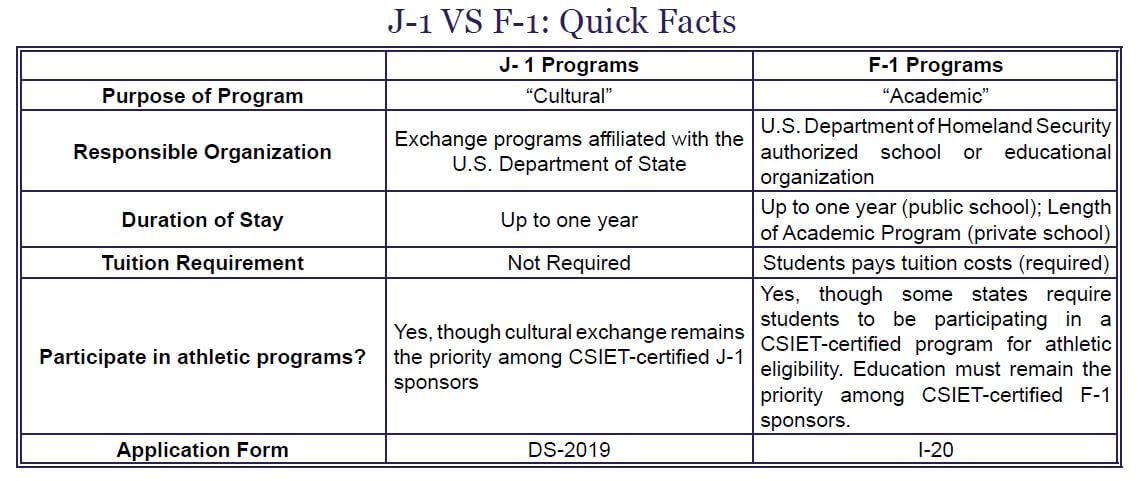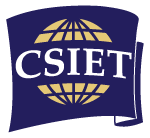Guide to U.S. International Student Visa Programs

In recent years, the number of high-school-age students attending school in the United States on an F-1 Visa has seen exponential growth. While just 6,500 high school students traveled to the United States on F-1 programs in 2007, that number grew to more than 59,000 in 2016-2017. For comparison, 25,211 high school students participated in J-1 programs in 2016-2017 academic year.
With limited regulatory guidance for F-1 programs and the growth of the F-1 visa program, in 2013, CSIET expanded its international exchange program oversight to include F-1 programs and participating school districts (in addition to the traditional J-1 international exchange organizations).
CSIET has been the standard-bearer in supporting safe, rewarding international student exchange experiences for more than three decades. The inclusion of F-1 programs into CSIET’s list of approved programs has facilitated a new and robust dialogue among its members; J-1 operators and F-1 operators are sharing best practices and collaborating in a new and energizing way.
International Student Visa Programs: What is the Difference?
J-1 High School visa
The J-1 High School visa is regulated by the United States Department of State. A student participating on an exchange through a J-1 visa will be sponsored by a State Department-compliant, independent sponsor organization. (Click here for a run-down of CSIET-certified J-1 sponsor organizations) By definition, the focus of a J-1 visa program is “cultural exchange” – specifically, promoting mutual understanding between the people of the United States and other countries. Generally speaking, participants are not required to pay tuition to schools; schools and host families are not compensated for their involvement in a J-1 program, though most cite hosting an exchange student as a life-changing event.
F-1 Visa International Student Program
The F-1 visa international student program is regulated by the Department of Homeland Security and is for the
stated purpose of gaining an education in the United States. Unlike the J-1 program, schools (or school districts)
themselves sponsor the student. The student is required to pay tuition to the host school. (Click here for a run-down of
CSIET-certified F-1 sponsor organizations)

J-1 VS F-1: Frequently Asked Questions
Why did CSIET defer its audit of J-1 programs while beginning to audit F-1 programs?
CSIET strives to provide a forum for exchange providers to share best practices and to promote safe, positive intercultural experiences – regardless of the designation they use to facilitate their exchanges. Because the J-1 programs are closely regulated by the Department of State, CSIET reviews any outstanding complaints and each program’s standing with the U.S. Department of State in determining which CSIET programs are eligible for certification. Because the F-1 programs are not overseen by the Department of State, CSIET requires its certified F-1 members to apply for the CSIET program audit process. The audit, conducted by independent CPAs according to CSIET’s template, is one vital part of our review to ensure our members’ adherence to CSIET values and certification requirements.
J-1 programs are considered to be more closely regulated than F-1 programs. Are they safer?
To be a CSIET-certified program, F-1 programs need to commit to a set of values, policies and procedures designed to ensure the safest possible environment for exchange participants. While the governmental regulations and levels of oversight may vary between the two, we believe the CSIET Seal of Approval should give parents and prospective participants an added level of confidence in the integrity of their chosen sponsor.
F-1 programs require schools to be compensated for hosting an exchange student. Are they hosting for the right reasons?
We firmly believe CSIET-certified programs are committed to providing meaningful, rewarding experiences to their participants. CSIET-certified F-1 providers have the policies, procedures and values in place to facilitate exchanges that are as safe and as educationally rewarding as possible
